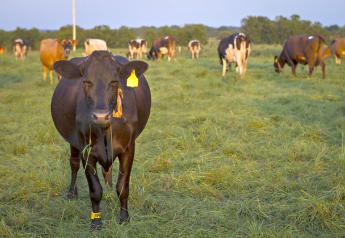Helping Cattle Cope with Summer Heat

Ready or not, summer heat has arrived. After a major heat stress event in parts of Kansas and Nebraska, the loss of over 10,000 cattle is nothing short of devastating.
The combination of hot temperatures, high humidity, and lack of air movement can cause severe cases of heat stress for cattle. This can result in reduced intakes and gains, and in extreme cases, death.
Cattle do not handle heat stress as well as humans. The range of temperature in which cattle do not use additional energy to maintain core body temperature is referred to as the thermoneutral zone. This zone generally ranges from 32°F to 75°F for cattle but can vary depending on metabolic size. When temperatures exceed the upper critical temperature, cattle expend energy in attempt to dissipate heat. Panting and elevated respiration and heart rate are signs that this is occurring. When temperatures remain above 70°F during the night, cattle are unable to recover before the next episode of heat exposure.
Some heat stress mitigation strategies to consider include:
- First and foremost, providing plenty of water and space around water tanks for each animal. When the temperature is above 80°F, cattle require nearly twice as much water (up to 30 gallons per head per day).
- Sprinklers with a large droplet size can be effective in cooling cattle and pen surfaces in dry conditions; however, limit use when humidity and moisture are high.
- Removal of excess manure is critical. When manure builds up, it holds moisture and increases humidity.
- Bedding pens is also an option to help lower the temperature of the pen surface.
- Providing shade can help reduce the heat load on cattle up to 20 degrees. Again, providing adequate space per animal is important when using shade structures. Overcrowding will have very little production benefit.
- Avoid working or transporting cattle during extreme temperatures. If necessary, handle cattle early in the mornings and not any time after 10 a.m.
- Consider reducing the amount of feed delivered in the morning to help lower the heat load on cattle, starting the morning before a heat event occurs.
- Improve air flow by incorporating tall mounds and placing cattle in pens with fewer windbreaks in the summer.
- Monitor weather frequently for potential heat events. Keep an eye out for predicted temperatures in the high 80s and 90s, especially following a rain and in situations where the wind speed is going to be less than 5 mph for several days.
Being proactive rather than reactive is important for avoiding any train wrecks when it comes to heat stress.







